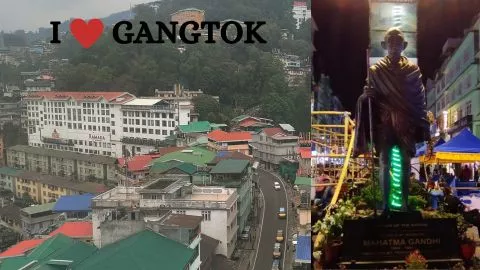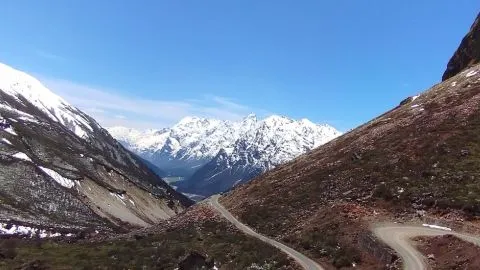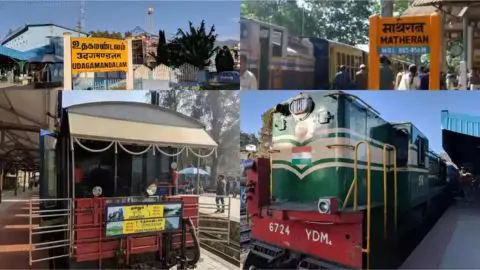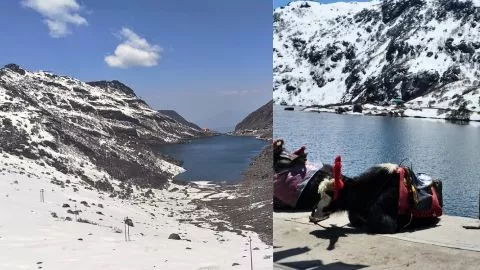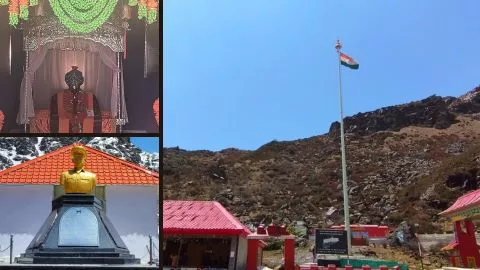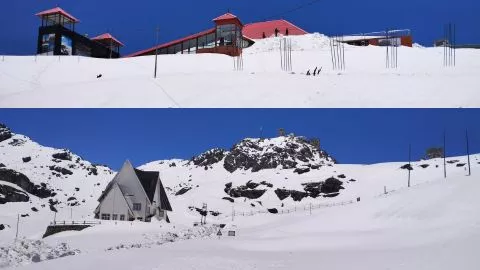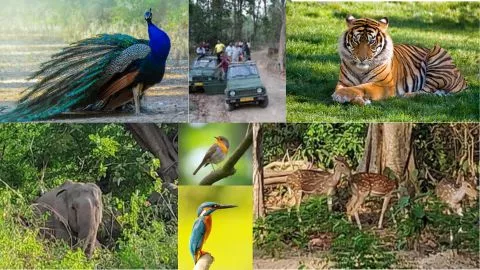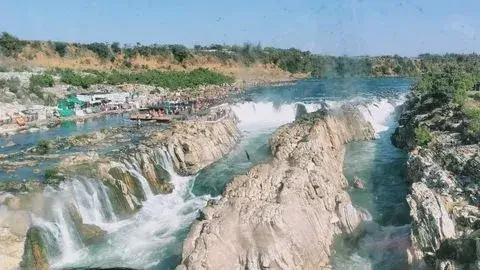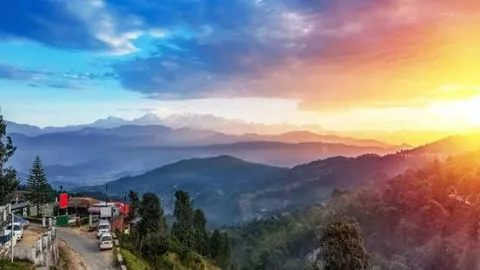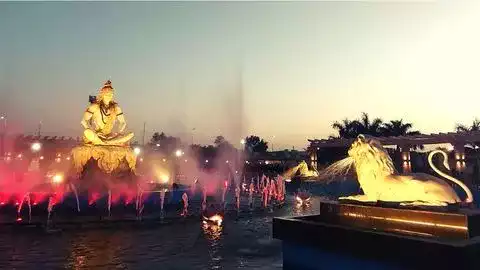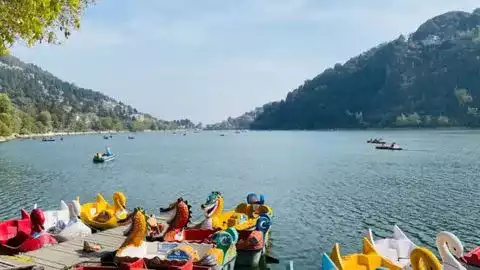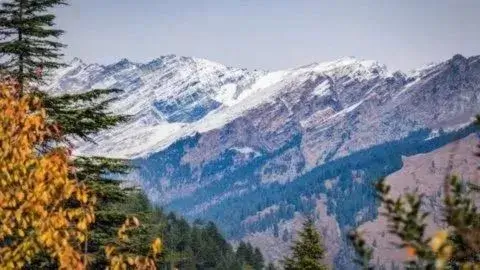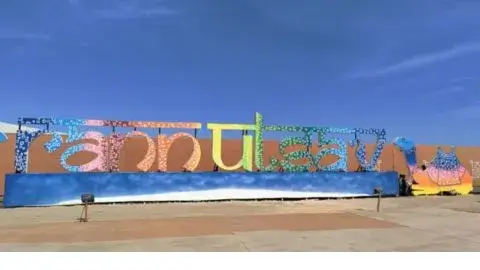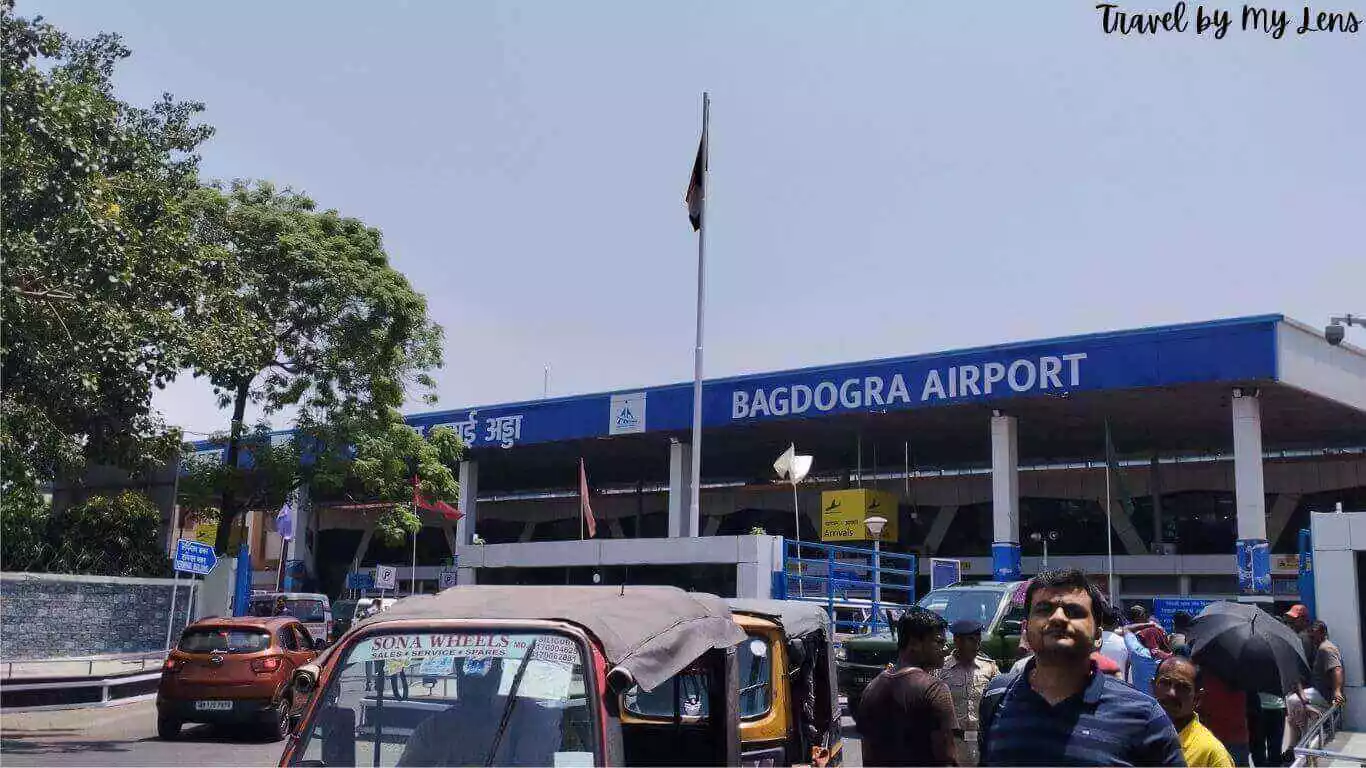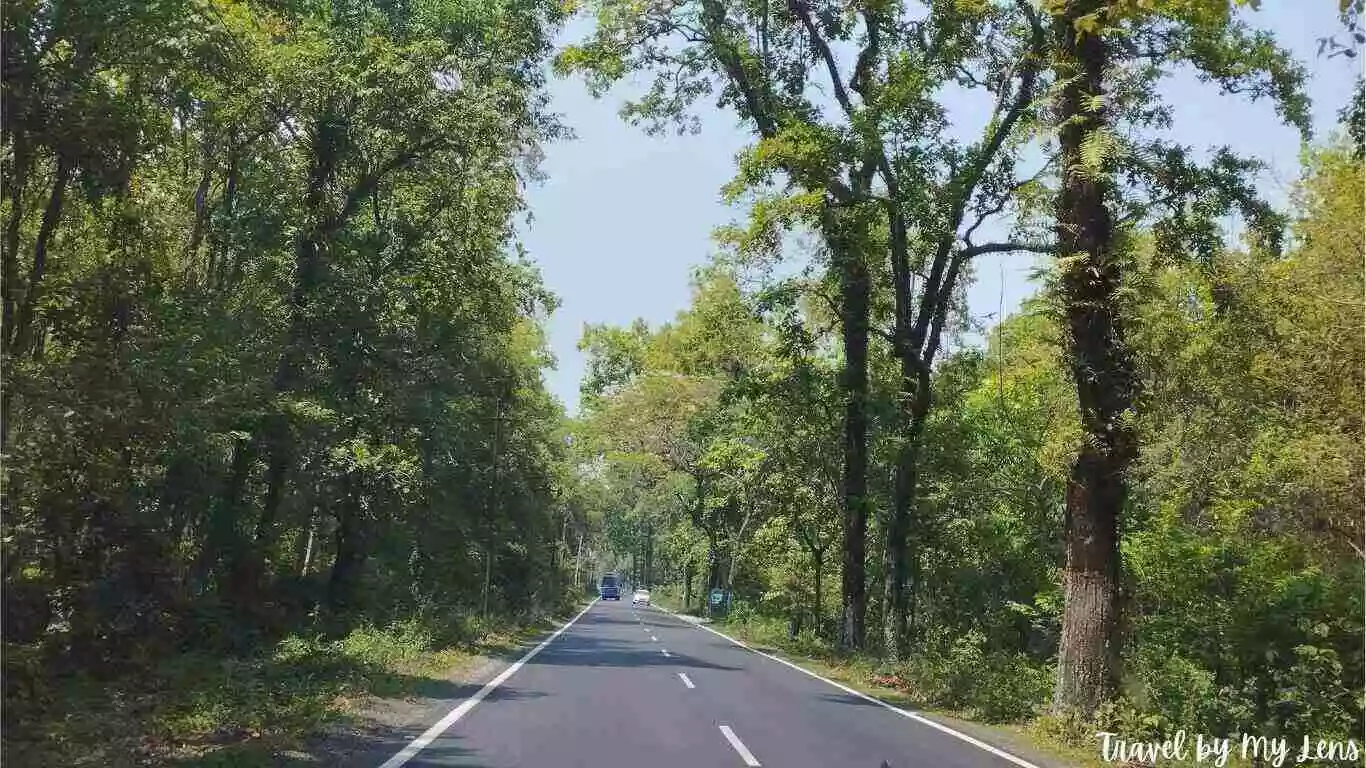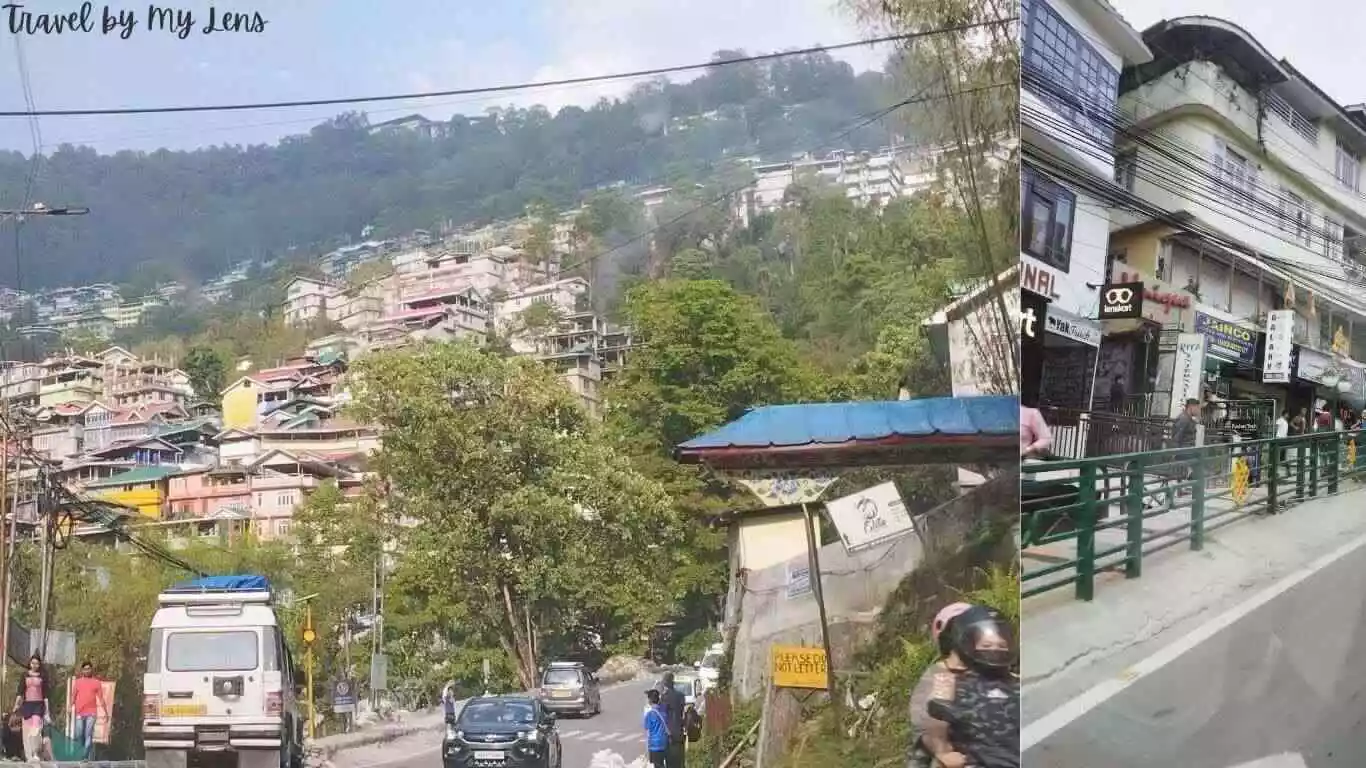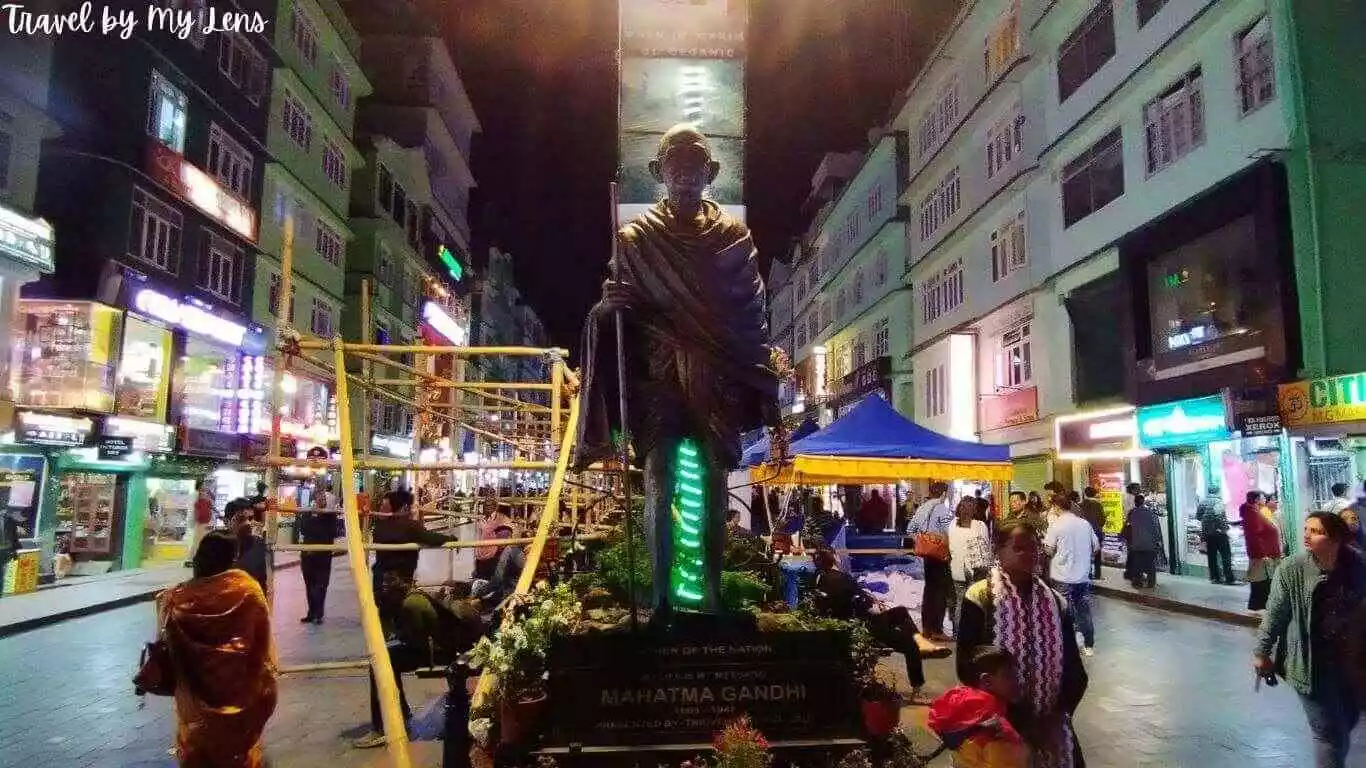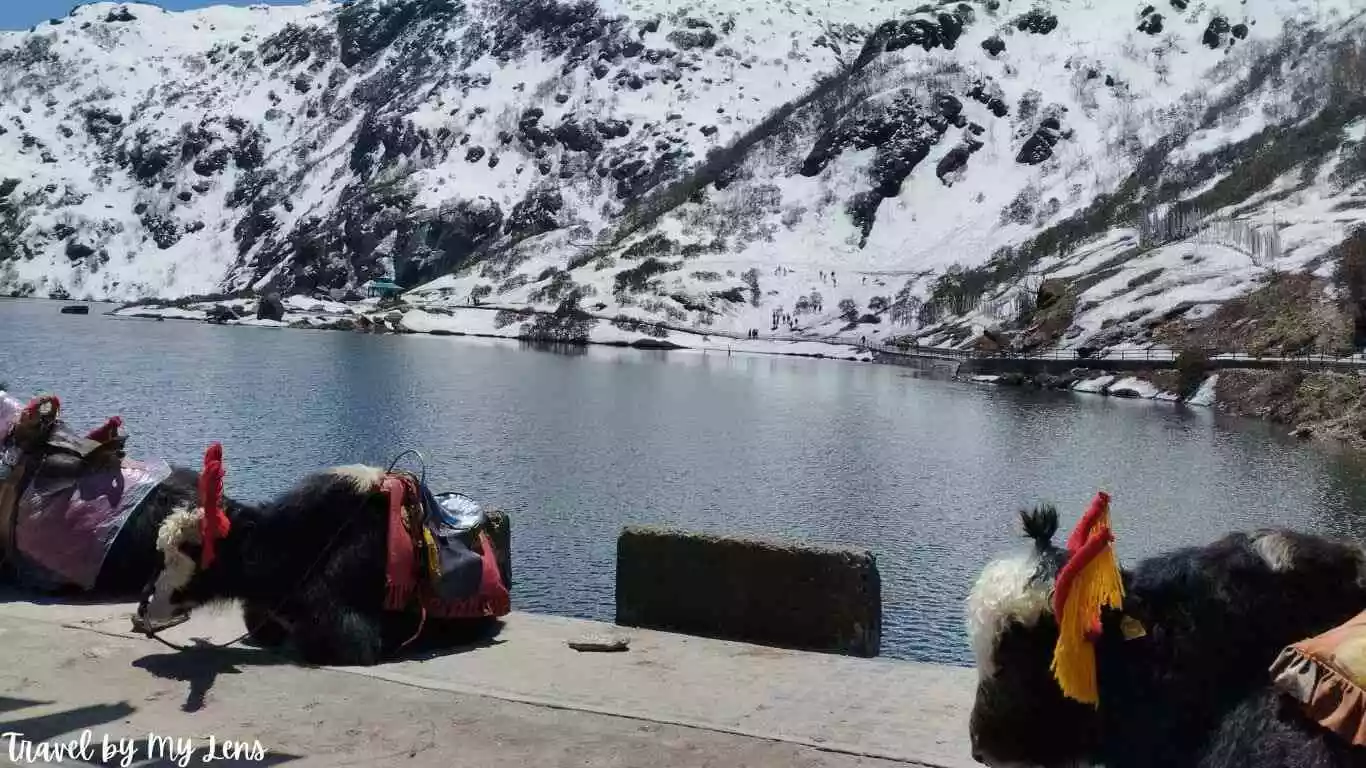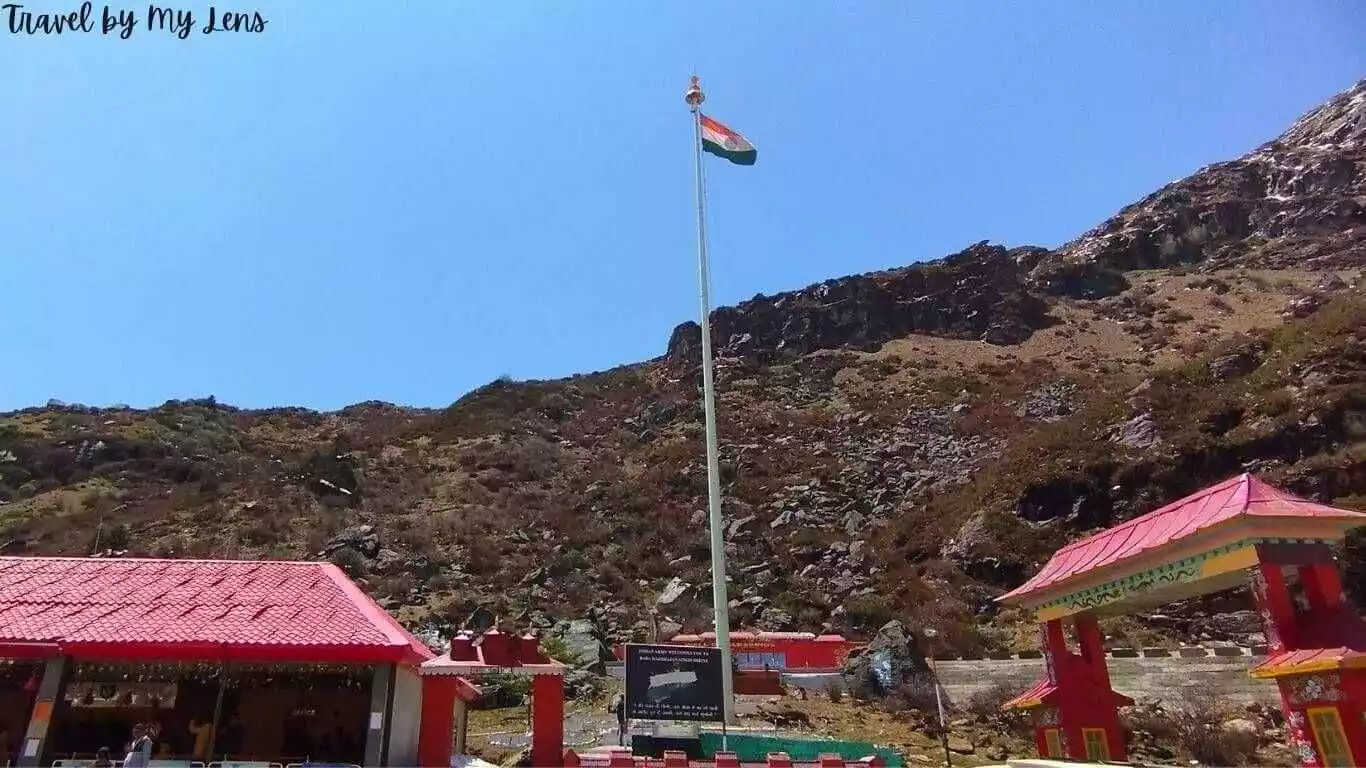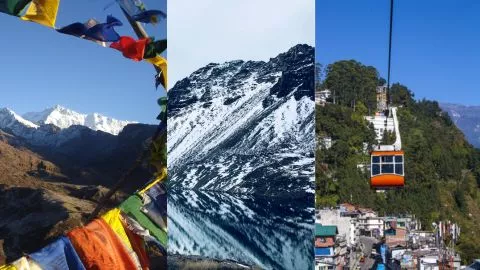
Discovering the Charm: Sikkim's Secrets in the City of Gangtok
Gangtok, literally meaning “Top of the Ridge“, is located in East Sikkim. It is one of the most popular hill stations of India, because it is incredibly attractive, pleasantly cheerful, and enveloped in mist.
It offers breathtaking views of Mt. Kanchenjunga, which is the third-highest peak range in the world and is perched at a height of 5410 feet on the ridges of the Eastern Himalayas. It also serves as a gateway to Sikkim, as it is the hub from where you can go to the other parts of the state, including the south (Ravangla, Namchi), north (Lachen, Lachung), and west (Pelling, Legship).
A Visual Odyssey: Discovering the city of Gangtok's Charms through My Lens
Welcome to the stunning city of Gangtok! If you’re looking for adventure, natural beauty, and cultural experiences all wrapped up in one, then this is the place for you.
Day 01 : Arrival to Gangtok
Our adventure began about 11 a.m. when we arrived at Bagdogra Airport, all set for an exciting journey to the enchanting city of Gangtok, nestled in the heart of Sikkim. We had carefully planned our flights and accommodations in advance, and our taxi driver received us at the airport, ready to embark on our journey.
Bagdogra is the nearest airport to Gangtok. The distance between Bagdogra to Gangtok is about 125 km. The journey from Bagdogra to Gangtok takes around 4–5 hours, and we get to see some stunning landscapes along the route.
Gangtok is located at an elevation of around 5400 feet (1650 metres). Our voyage included a stop at the recently opened Kake Di Hatti, a popular cafe in Siliguri, where we indulged in traditional North Indian cuisine, particularly their enticing selection of Naans.
We cruised across NH10 after a magnificent lunch, marvelling at Sikkim’s natural beauty and rich cultural legacy, passing into the state after an hour, leaving behind the bustling West Bengal. The path took us alongside the gorgeous Teestha River, enticing us to go rafting if time allowed. Despite the roads being small and often congested, the state’s natural beauty was visible in its cleaner ambiance.
These routes require cautious and skilled driving. Our journey included a quick stop for afternoon tea, and by 5:30 PM, we had arrived at the picturesque city of Gangtok. Despite the city’s small roads, we were pleasantly pleased by the well-decorated footpaths that catered to pedestrians.
We arrived at our hotel, Yashshree Sikkim Blossom, at about 6:30 p.m. The hotel is conveniently located near MG Marg, Gangtok’s bustling market hub. We took a nice cup of tea in the hotel’s cosy rooms before stepping out for a leisurely stroll along MG Marg.
The market was a fascinating mix of shops, eateries, and local attractions that created a captivating pedestrian zone. Although taxis were available for local transportation, we chose to take a leisurely walk, savouring the vibrant atmosphere. This is a ‘No Transport’ zone, so exploring this place will be a pleasant experience. There were local artists performing some hit Bollywood songs.
Our gastronomic adventure led us to sample the famous Momos and Veg Rolls at a nearby roll house, followed by a tantalising Tibetan noodle soup called Thukpa, leaving our taste buds thoroughly pleased. We spent some time doing window shopping at the roadside shops and also did some purchasing for some local gift articles.
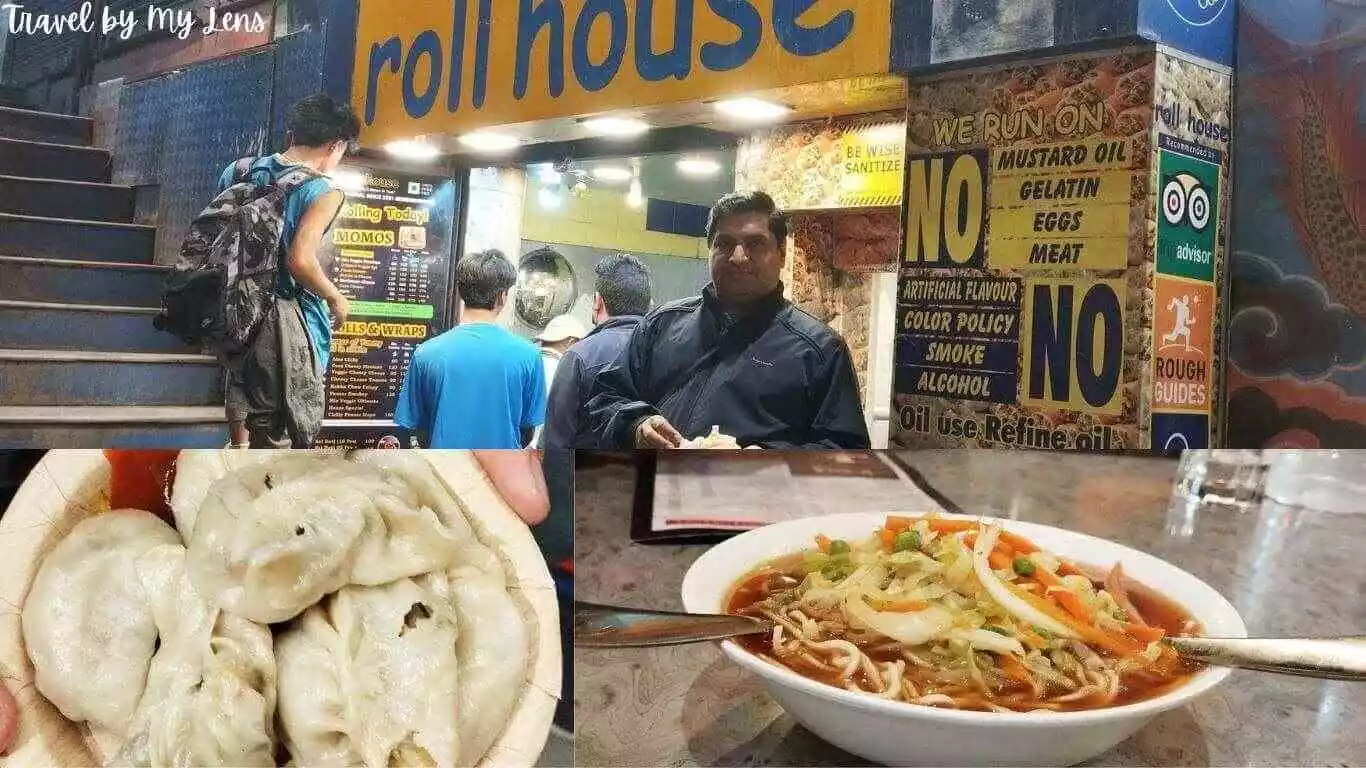
The day’s excitement and exploration on MG Road eventually led us back to our hotel around 10 p.m. Exhausted yet content, we embraced a restful night’s sleep, eagerly anticipating the adventures that lay ahead in beautiful Gangtok.
A quick tip for fellow travellers: If your hotel is located on MG Road, vehicles won’t directly reach your doorstep. Similarly, vehicles from West Bengal aren’t permitted into the market area, dropping passengers at the Deorali Taxi stand. You’ll need to arrange for local taxis to reach your accommodation from there.
Day 02 : Gangtok Excursion: (Tsomgo Lake - Baba Mandir - Nathula Pass)
Last night, our tour operator confirmed our coveted Nathula Pass permit and arranged for our pickup at 9 a.m. The arrangement of vehicles that are not directly dedicated to your tour is an intriguing part of Sikkim travel. Instead, they’re chosen based on your itinerary, considering the need for skilled drivers on specific routes and vehicle restrictions in certain areas. For example, entry into North Sikkim has limitations for smaller vehicles.
After a hearty breakfast, we geared up for an enthralling day exploring Nathula Pass, among the most captivating attractions in Sikkim. Along the way, our itinerary included visits to Baba Mandir and Tsomgo (Changu) Lake, each promising its own unique charm.
For details on these amazing places, I’ve dedicated separate blogs, making it easier for readers to delve deeper into our experiences:
Nathula Pass
Baba Mandir
Tsomgo (Changu) Lake
Later in the evening, we once again sauntered over to the vibrant MG Market, immersing ourselves in the flavours of local delicacies and soaking in the blissful ambiance. Returning to our hotel, content with the day’s adventures, we settled in for another night of peaceful slumber.
Day 03 : North Sikkim: (Lachung - Yumthang - Zero Point)
Today unfolded a new expedition that would lead us to the lovely scenery of North Sikkim, notably Lachung. Following a delicious breakfast, we bid our hotel farewell and prepared for our drive to Lachung. Our vehicle was waiting for us in the hotel parking lot at 9:30 a.m., signalling the start of our next adventure. We captured photographs as cherished recollections of our lovely stay at the hotel before departing.
The stay had been nothing short of spectacular, leaving us with wonderful memories to cherish.
For those who want to learn more about my Lachung adventure, I’ve created a detailed blog that covers every detail and exciting moment. Follow my tour by clicking on the link below:
Here’s some travel advice for you: Securing permits is critical when arranging excursions to Nathula and North Sikkim. To ensure a hassle-free and delightful trip experience, make sure you provide all relevant paperwork to your travel agency in advance.
Day 04 : Return to Gangtok
Having cherished 1.5 days of sheer delight in Lachung, exploring the surreal Yumthang Valley and the mesmerising Zero Point, we made our way back to Gangtok by evening. Our accommodation for this part of the journey was arranged at the Udaan Woodberry Hotel, nestled at Swastik Gate in Gangtok.
During our return journey, we made a pit stop at one of Gangtok’s local gems, Bakthang Waterfall. Situated along the 31A National Highway connecting to North Sikkim, this waterfall provided a picturesque pause. We seized the moment, capturing photographs to etch the memory before continuing our journey to the Udaan Woodberry Hotel.
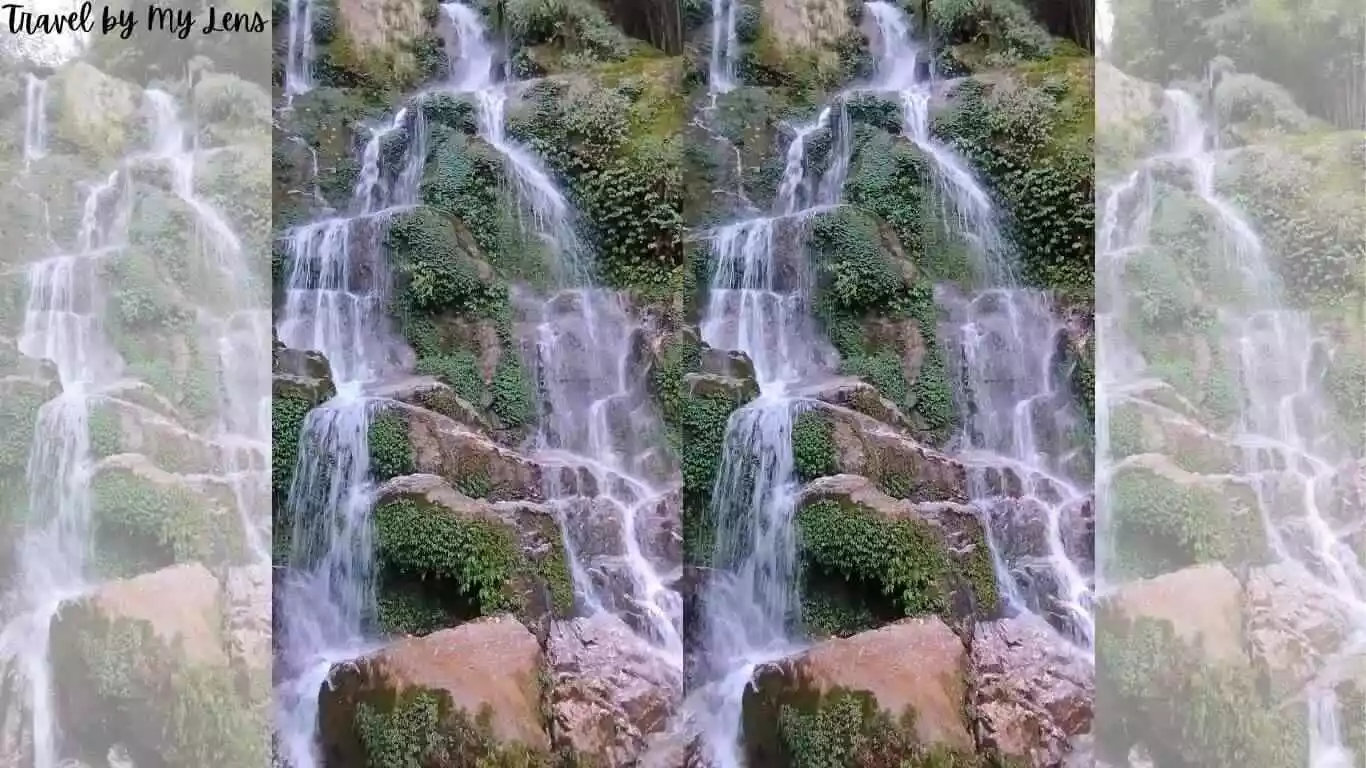
This new accommodation boasted another charming property, although the rooms were comparatively smaller than our previous stay. After freshening up, we savoured a delightful dinner at the hotel before venturing out for an evening stroll along the streets of Gangtok. The vibrant atmosphere and the local hustle and bustle made for a pleasant experience before we retired for a restful night’s sleep.
Day 05 : Gangtok Local Sightseeing
We had set aside an additional day in Gangtok to cover the main tourist places near Gangtok. There are quite a few places to visit near Gangtok, and you would need about a full day if you planned to cover all of them.
For the Gangtok City Tour, renting a taxi is a convenient option available to travellers. You can tailor your tour by selecting from various packages offered, such as the half-day tour comprising either 3 or 7 points of interest, or opt for the full-day tour covering 10 points. We personally curated our itinerary by handpicking specific local sightseeing spots in Gangtok that were on our must-visit list.
After breakfast, we started for the local tour around 9 a.m. Our first stop was at Enchey Monastery. Perched atop a hill, this monastery holds a legacy spanning roughly 200 years, making it one of the oldest in the vicinity. Although it was crowded due to it being a Sunday, we managed to avoid the heavy traffic by starting our day a tad earlier. After spending around 30 minutes, we headed to our next stop.
Our journey led us to Hanuman Tok, a temple dedicated to Lord Hanuman. This sacred site not only pays homage but also treats visitors to breathtaking vistas of the Kanchenjunga range. After relishing the natural beauty and capturing obligatory poses, we proceeded to Ganesh Tok.
Ganesh Tok, another temple honouring Lord Ganesha, offers an enclosed viewing lounge with glass panels and an open balcony. Adjacent to the Himalayan Zoological Park, we opted to skip visiting the park in Gangtok since we had plans to explore the zoo in Darjeeling during our trip. However, for families with spare time, the Gangtok Zoo is a worthwhile visit, especially for the little ones.
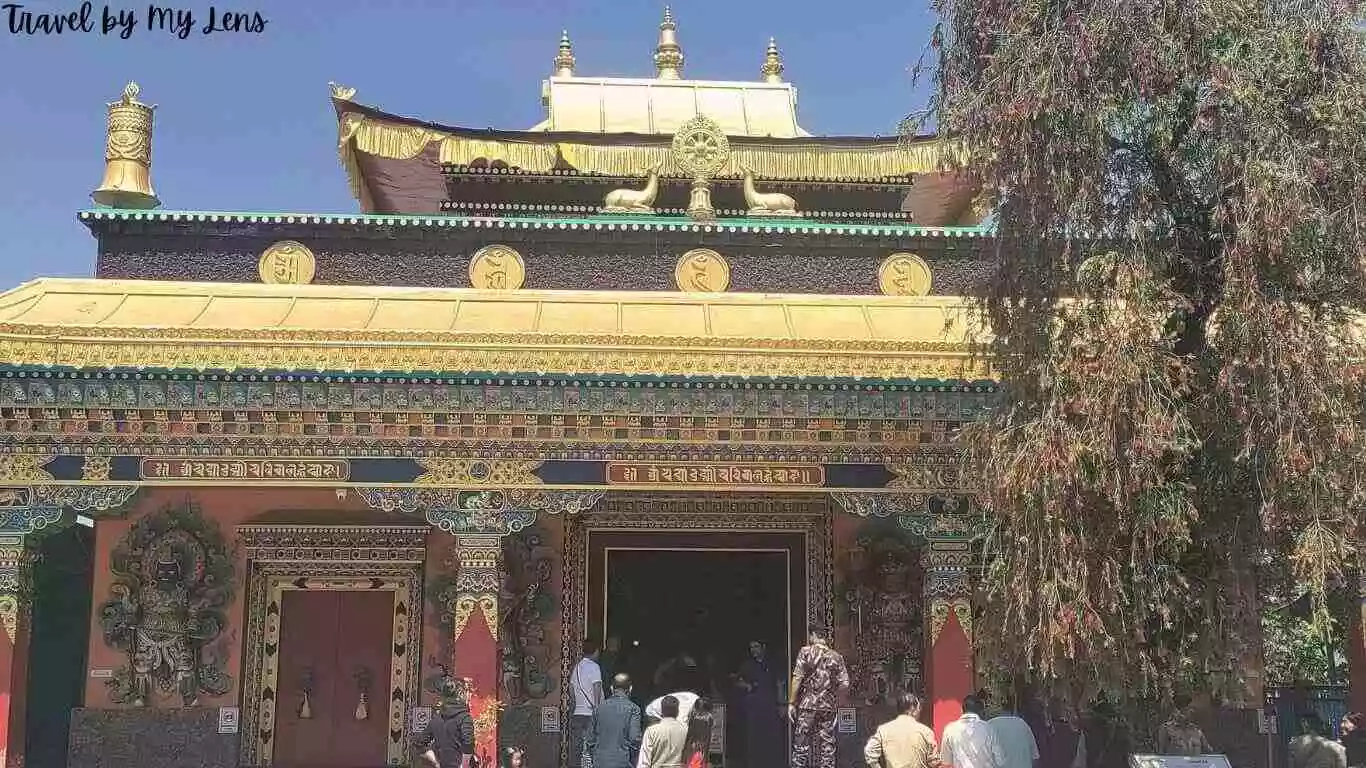
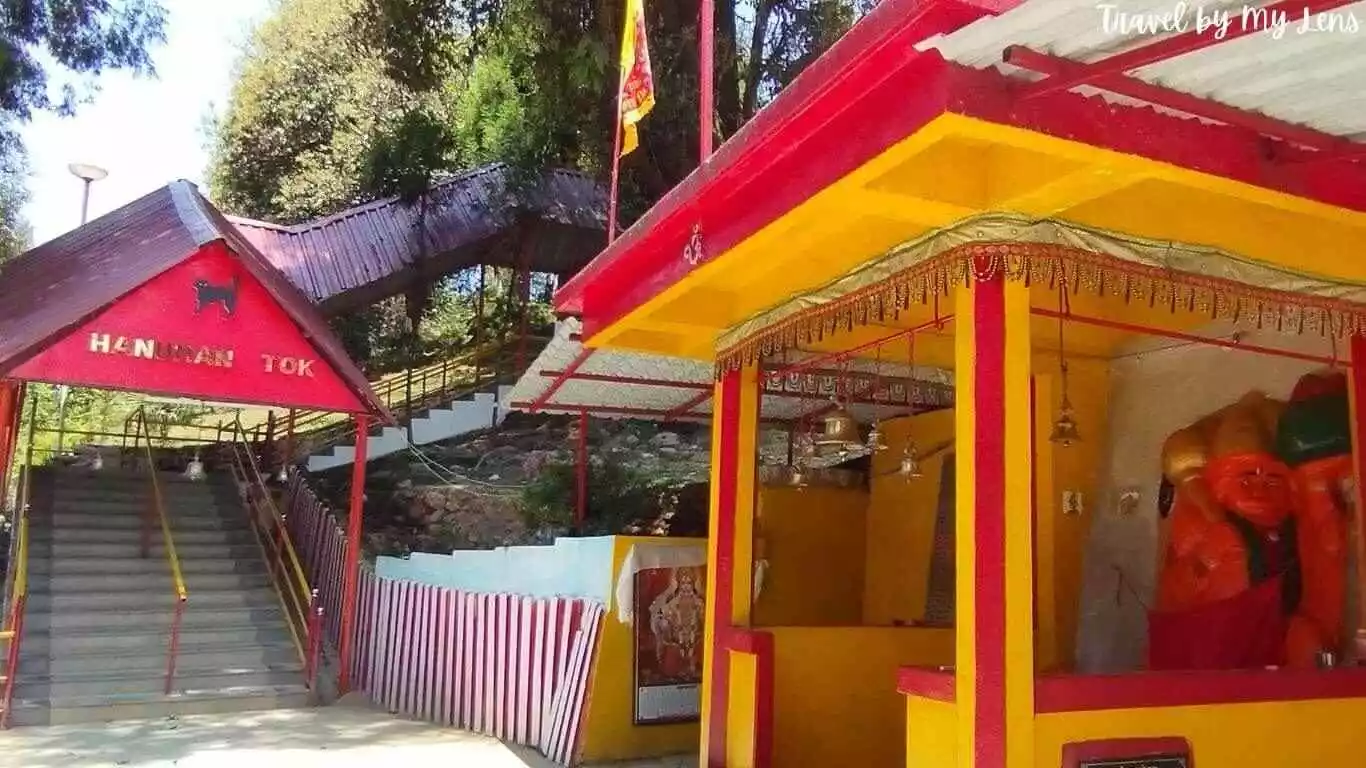
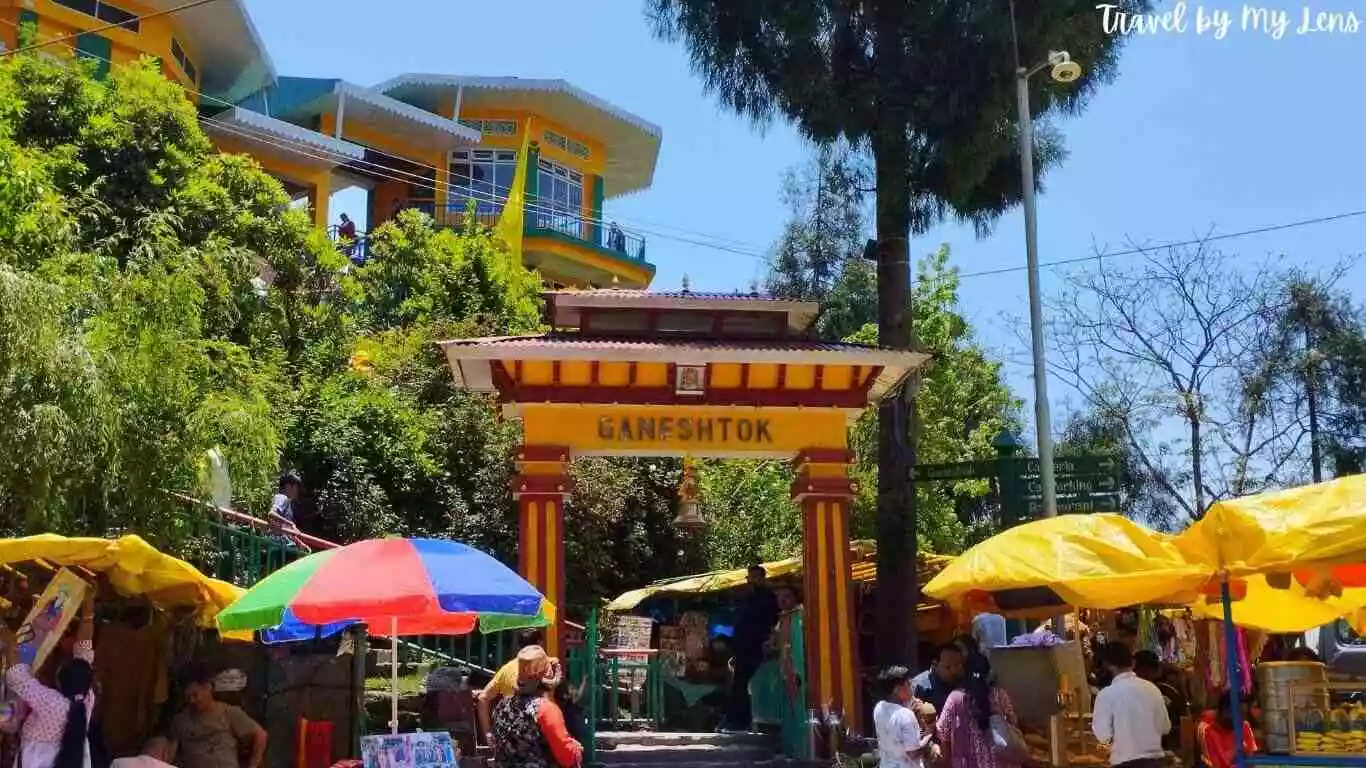
Sikkim is renowned for its plethora of monasteries, and our next stop was Ranka Monastery, among the finest in the region. Despite the challenging road conditions, which took nearly an hour to traverse, the monastery was nestled amidst forested mountains, presenting a serene setting. Adjacent to the car park, a charming gift shop offered souvenirs, while a small restaurant beckoned us for a well-timed lunch.
After our meal, we ventured to Banjhakri Falls, conveniently located near Ranka Monastery. This beautiful place, nestled in a landscaped park encircled by lush wooded areas, is a favoured spot for picnics. The area provided ample opportunities for relaxation and recreation, boasting multiple food options, including a restaurant.
Continuing our expedition, we made our way to the Do Drul Chorten Stupa, positioned near the Namgyal Institute of Tibetology atop a hill. This revered Buddhist monument features a striking golden dome. Although the institute was an intriguing prospect, we chose to forgo it, eager to experience the ropeway before the cloudy weather potentially turned to rain.
Arriving at the Gangtok Ropeway ticketing counter around 3:30 PM, we quickly realised the importance of planning ahead. With the car shuttling between Deorali and Namnang, accommodating approximately 24 passengers standing, it was imperative to secure tickets early. The 10-minute ride offered breathtaking vistas, allowing passengers to soak in the delightful scenery while standing throughout the journey.
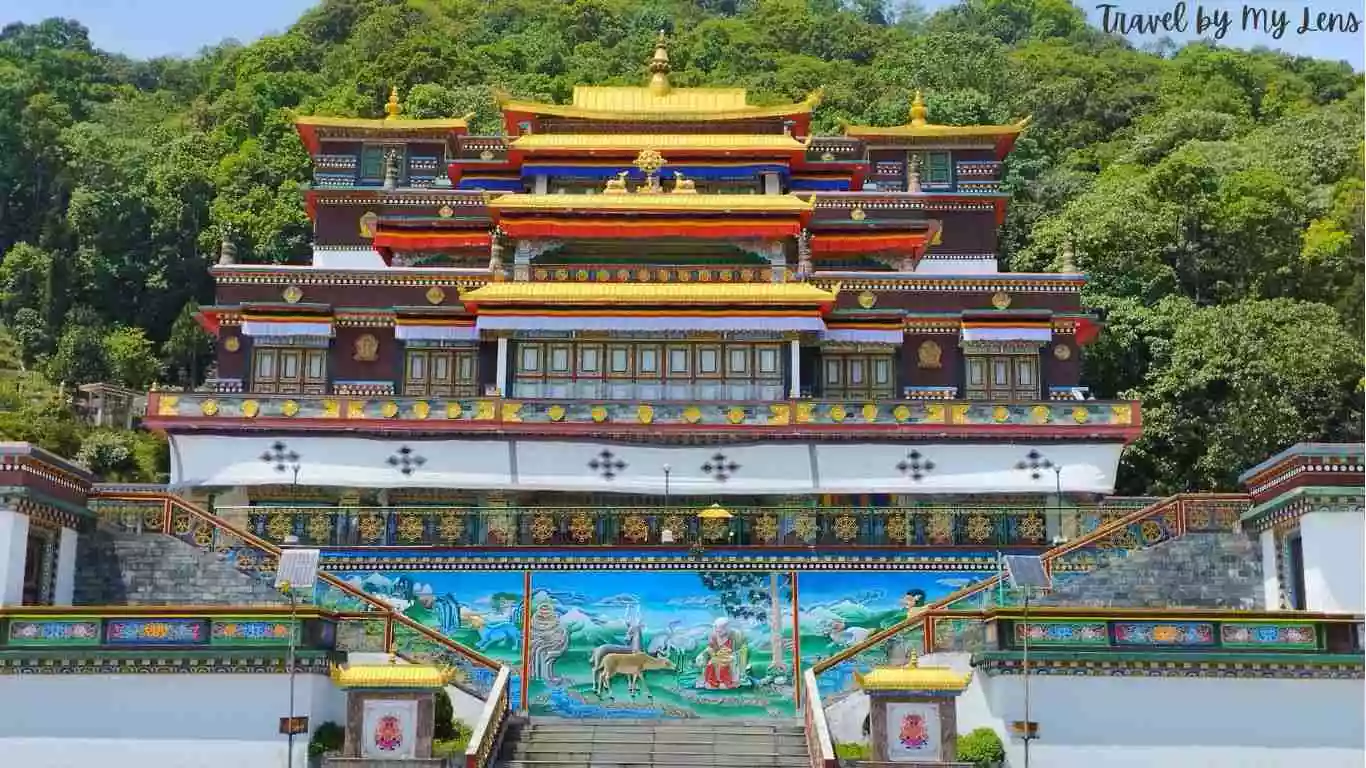
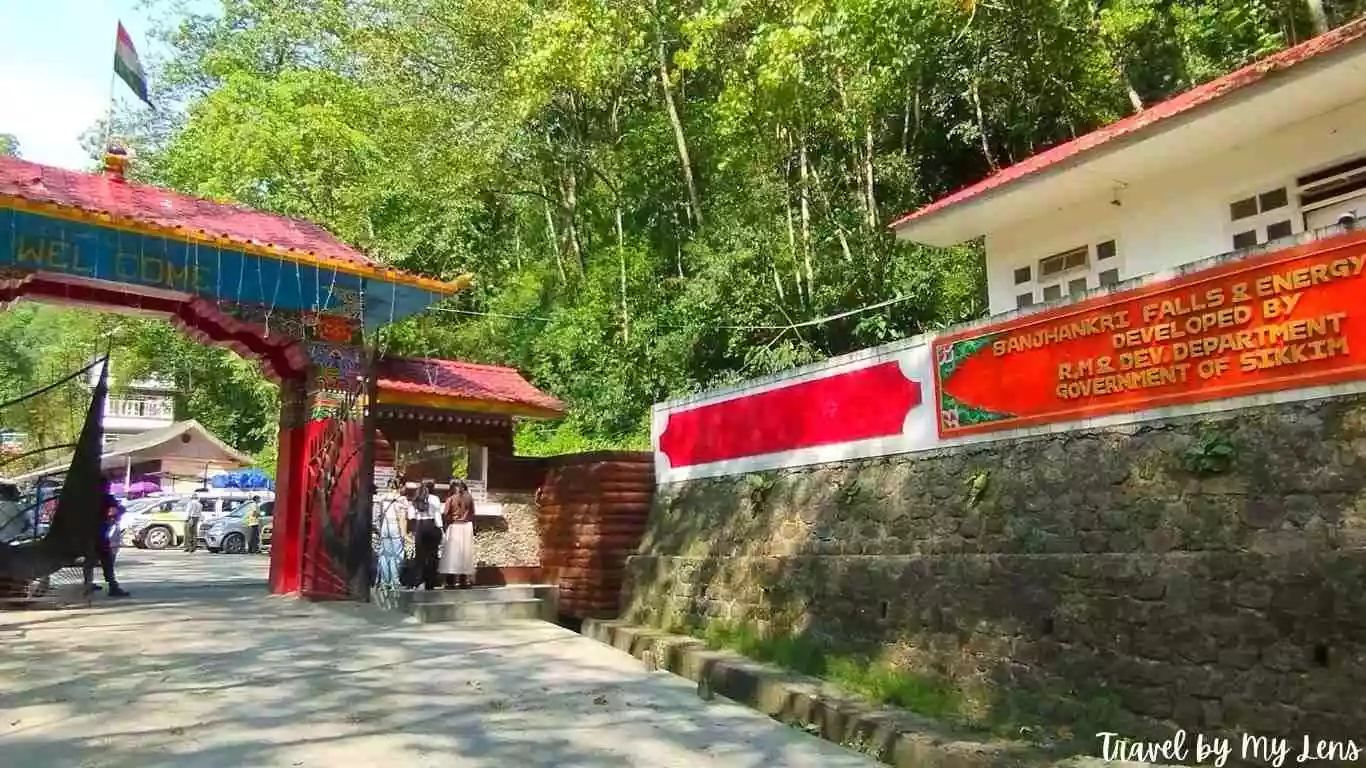
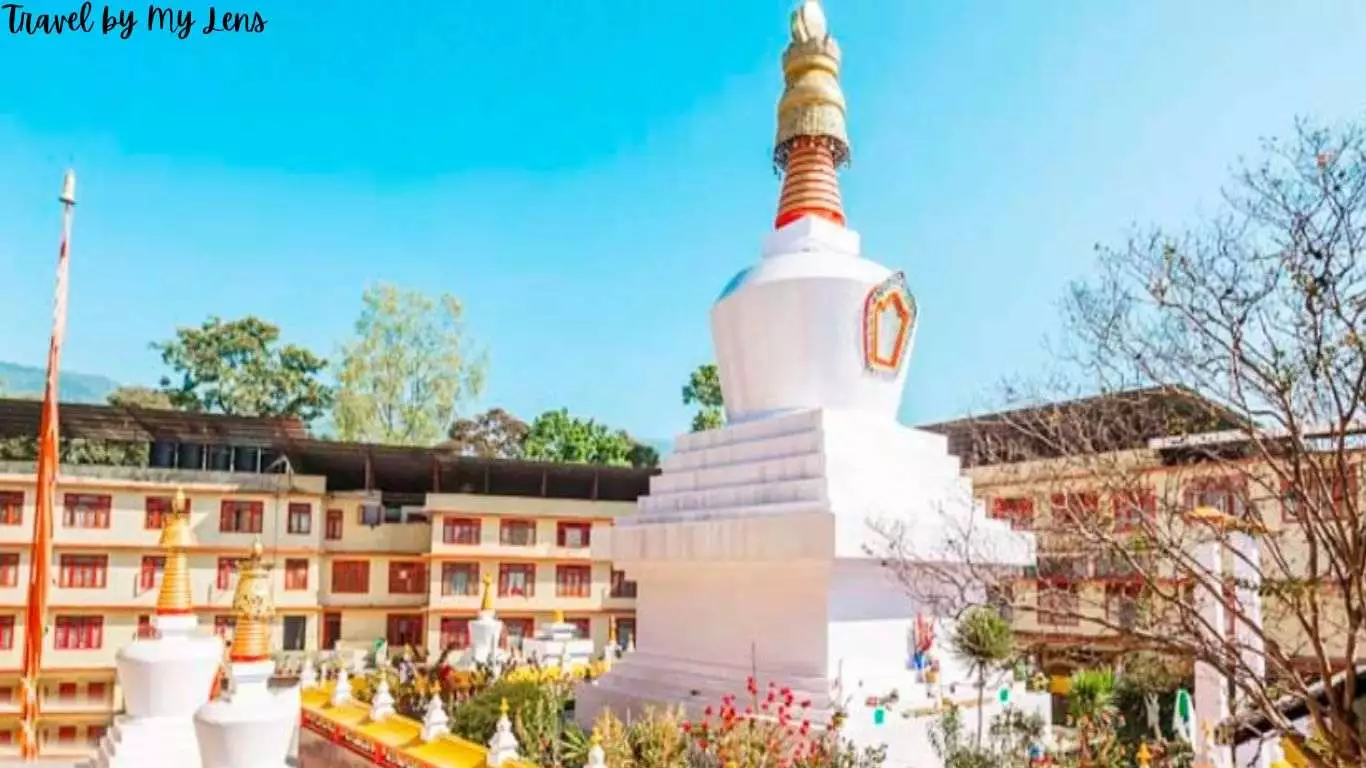
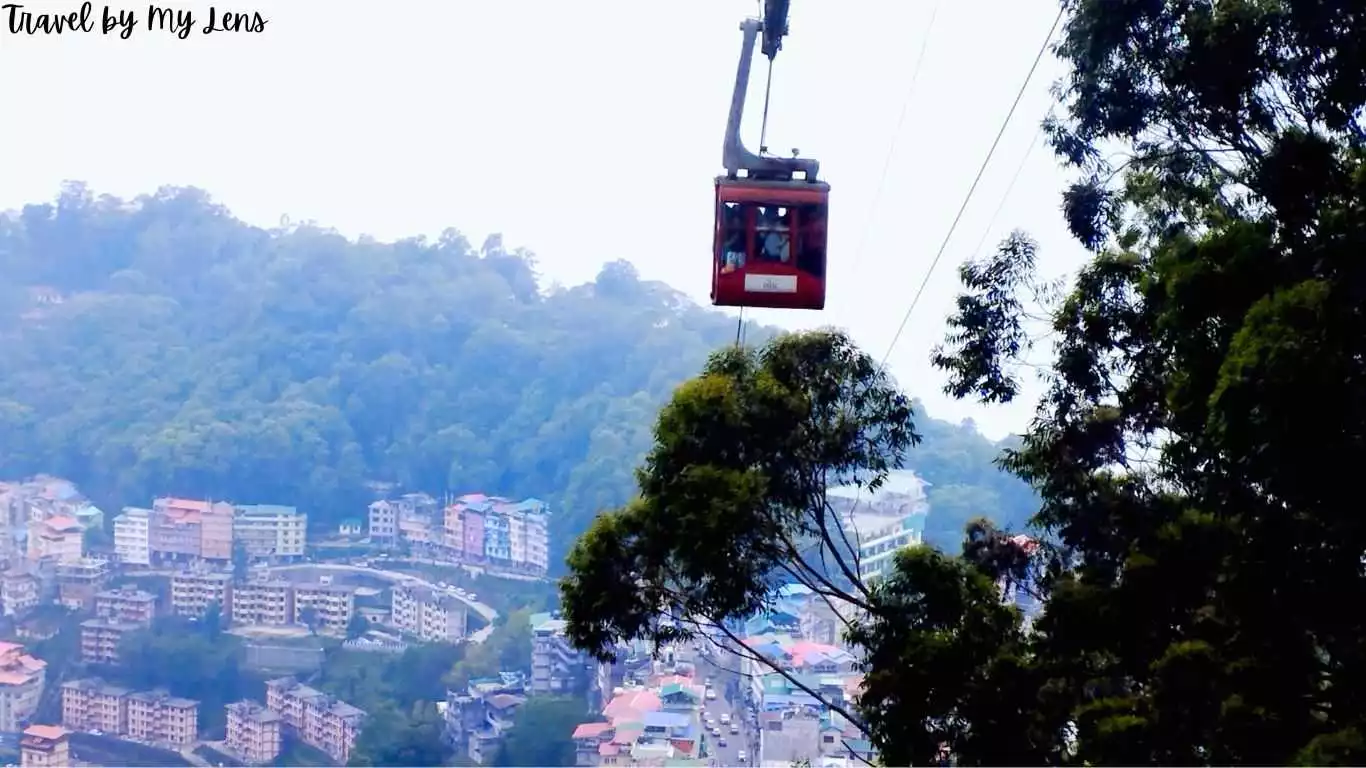
For an in-depth exploration of all the fascinating sightseeing spots in Gangtok, I’ve dedicated a separate blog detailing each location. In this comprehensive guide, you’ll find vivid descriptions and captivating insights into every place worth visiting in Gangtok:
The best places to visit in Gangtok
Following our exhilarating cable car ride, we returned to our hotel for some well-deserved rest. Later in the evening, feeling refreshed, we hailed a local taxi to embark on one last visit to MG Road. The taxi fare amounted to Rs. 200, dropping us off near the taxi stand just below MG Road.
Our dinner plans led us to Nimtho restaurant, a gem known for its authentic Nepalese and Sikkimese cuisine. Delving into their specialties—Thakali thali, Momos, and Thukpa—proved to be a delightful culinary experience. The flavours were exquisite, leaving a lasting impression and earning our hearty recommendation.
After the wonderful dinner, we leisurely strolled through MG Market, taking in the vibrant atmosphere, before concluding the evening with a taxi ride back to our hotel.
During our visit to Gangtok, we had the pleasure of meeting some remarkable individuals who added immense warmth to our trip. Their friendliness and hospitality truly enhanced our overall experience. The city itself possesses a unique charm, with its residents hailing from diverse backgrounds, including various parts of India, Nepal, and Tibet.
After this memorable trip, Gangtok has secured a special place in my heart, ranking among my favourite cities in India. For anyone planning their travel itinerary, I wholeheartedly recommend considering Gangtok. Its distinctive allure and welcoming atmosphere make it an absolute must-visit destination, deserving a spot on your travel wish list if it isn’t already there.
How to reach Gangtok
By Air:
The nearest airport to Gangtok is Bagdogra Airport, located approximately 125 kilometres away. Upon landing at Bagdogra, travellers can avail themselves of pre-booked taxis or shared cabs to reach Gangtok. The journey from Bagdogra Airport to Gangtok takes around 4-5 hours, depending on road conditions.
The only airport in Sikkim is Pakyong Airport, one of India’s high airports, situated at an altitude of 4646 feet. The airport is located about 22 km south of Gangtok and has limited operations from Kolkata and New Delhi currently. Travellers arriving at Pakyong Airport can take a private cab to Gangtok, which takes around an hour.
Helicopter Service:
The Sikkim Tourism Development Corporation (STDC), under the Sikkim State Government, offers a helicopter service named Pawan Hans that operates between Bagdogra and Gangtok. This 35-minute flight allows a maximum of five passengers, each with 10 kg of luggage. Tickets can be booked ahead of time, but flight schedules are contingent upon weather conditions and seat availability. It’s advisable to confirm before booking or arriving.
The helicopter departure point is a short walk from Bagdogra Terminal. Upon arrival in Sikkim, passengers are dropped off at Lower Burtuk, where the Sikkim Helipad is situated, approximately 5 km from Gangtok town.
Flight Schedule:
Bagdogra to Sikkim: 11.00 a.m.
Sikkim to Bagdogra: 2.30 p.m.
By Train:
The closest major railway station to Gangtok is New Jalpaiguri (NJP) Railway Station, situated around 120 kilometres from the city. From NJP, one can hire taxis or board buses to reach Gangtok. The road journey from NJP to Gangtok takes approximately 4-5 hours, offering scenic views along the way.
By Road:
Gangtok boasts well-connected roads that link it to several nearby cities and towns. Private buses, shared jeeps, and taxis operate from Siliguri, Darjeeling, and other neighbouring areas to Gangtok on a regular basis. The road journey provides stunning vistas of the Himalayas and lush landscapes, offering an enjoyable travel experience.
Best time to visit Gangtok
The best time to visit Gangtok and experience the city’s vibrant tourism scene is during the spring and autumn months, spanning from March to May and then from October to November. March to May is often considered the peak season for tourism in Gangtok.
These periods offer the most pleasant weather conditions, with clear skies and moderate temperatures ranging between 15°C and 22°C, making it the best season to visit Gangtok. The lush greenery during spring and the vibrant hues of autumn enhance the charm of Gangtok’s landscapes.
The best time to visit Gangtok for snowfall is during the winter months, particularly from December to February. Gangtok during this time is adorned with snow-capped vistas, offering a picturesque setting. However, do note that the temperatures drop significantly, averaging around 4°C to 7°C. You will need proper warm woollen clothes if you plan to visit Gangtok during this time.
Where to stay in Gangtok
In Gangtok, there’s a wide array of accommodations catering to varying preferences and budgets. Staying close to MG Marg could be one of the choices, with easy access to shopping centres and eateries. Booking in advance is advisable, especially during peak seasons or festivals.
Some of the recommended accommodations are:
Udaan Woodberry Hotel
Yashshree Sikkim Blossom
The Fern Denzong Hotel & Spa
Udaan Alpine Resort (not within proximity of MG Road but amidst nature)
Shopping in Gangtok
Consider purchasing Tibetan handicrafts, woollens, and tea. While in Gangtok, purchase Tibetan-style lanterns and wall hangings, Lord Buddha figurines, Buddhist prayer flags, and Sikkimese cups and teapots.
The most prominent shopping areas are:
MG Marg Market (Mahatma Gandhi Road): 10:00 a.m. onwards; closed on Tuesday
Lal Bazaar: 9:00 a.m. to 8:00 p.m. (This is mostly for the locals to buy local items)
Directorate of Handicrafts & Handlooms: 10:00 a.m. to 4:30 p.m.; closed on Saturday and Sunday
- All Posts
- Central
- East
- General
- North
- West

